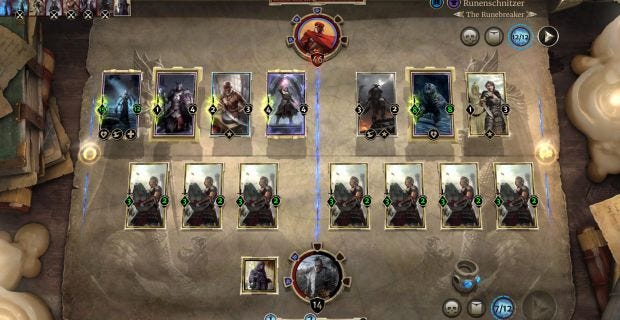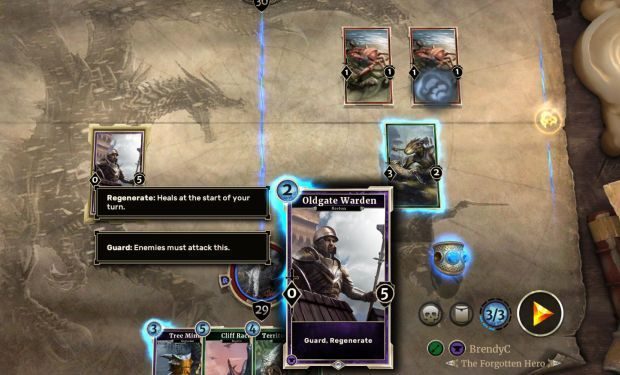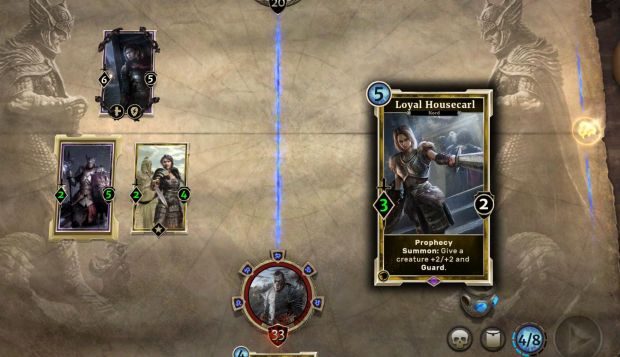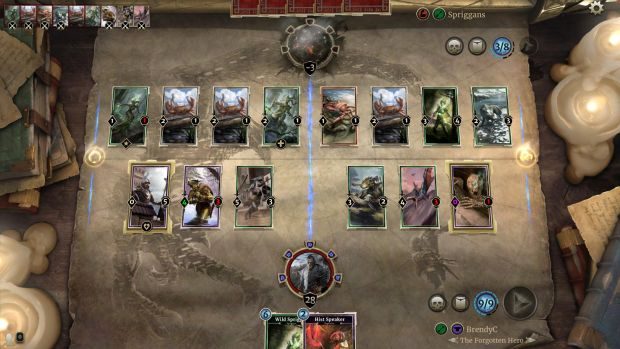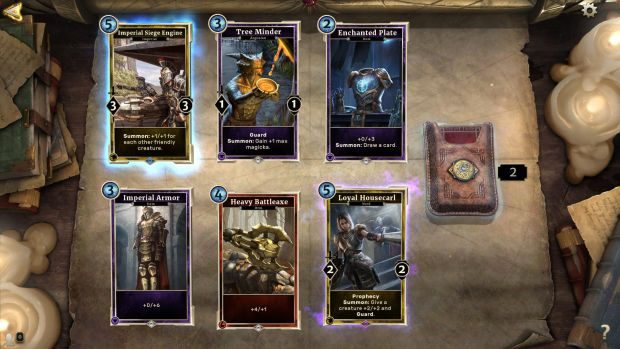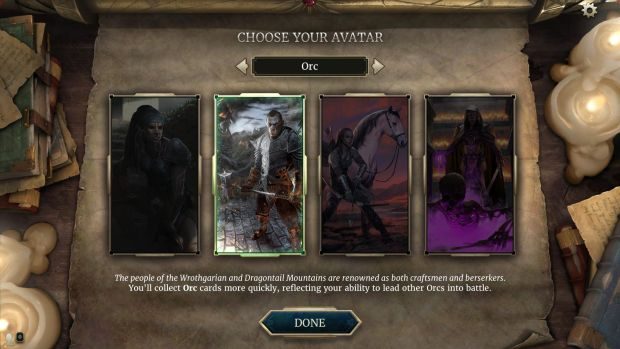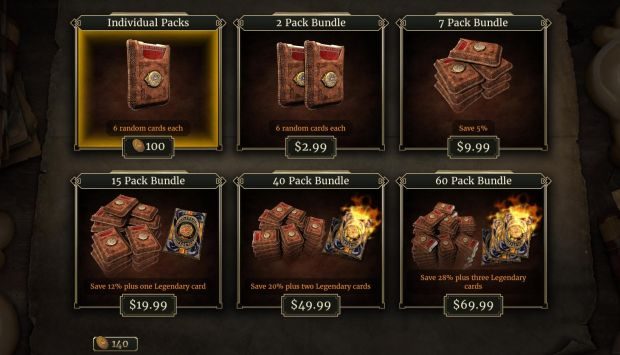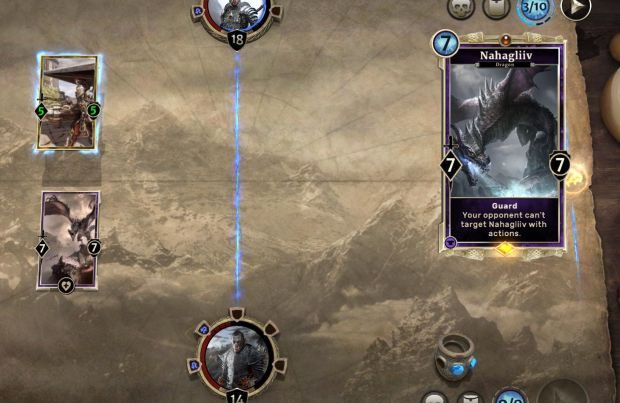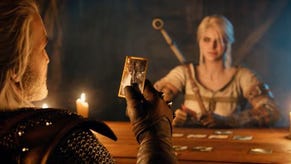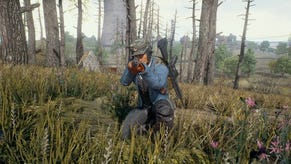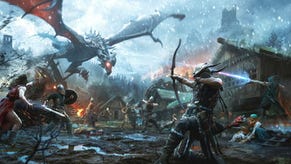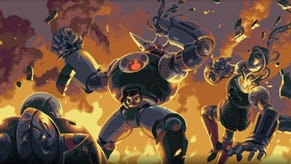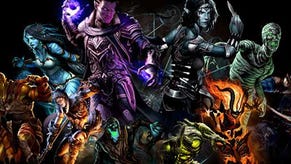Wot I Think - Elder Scrolls: Legends
It's Hearthstone meets another Hearthstone
It’s a card game! As discussed on this week’s podcast, I’ve been somehow saddled with the reputation of being “the collectible cards game guy” at RPS. This is partly my own fault due to my Duelyst-ing but also partly due to my fellow journos typecasting me, like some kind of grubby-fingered Bryan Cranston. This isn’t the first time this has happened. Remember when I became “the tanks guy” because I once asked too many questions about tanks?
But, as it happens, if enough people believe you are the cards guy, and you play lots of card games because of that, then you have essentially become the cards guy. Even if you’re not particularly good at them and you grimace at the very words “free-to-play”. With all this in mind, let’s see wot I think of The Elder Scrolls: Legends [official site]. It came out months ago but has recently added its second expansion, Heroes of Skyrim, so now is a decent time to dive in. Is it something fresh, or is it simply Bethesda’s response to Hearthstone?
It’s a response. But not necessarily a poor one. The simplest description of the game is: you are playing two games of Hearthstone at the same time, with the same person. There are two lanes, see, which splits the field and forces you to always make the smallest tactical decision possible – where will I put the next killer? Where should I focus my attention? You still have to kill the player themselves – a central orb that can be struck from either lane and has 30 healthbits. But now there are two battlefields. It’s a very straightforward alteration, one that sounds like nothing but a laughable gimmick when you first hear it: “Legends is Hearthstone, but twice”. In reality, it’s just enough to make the game of small numbers interesting (along with another minor change, which I'll talk about soon).
One of the lanes is called the “shadow lane” and this grants a card entering the lane cover, making them un-attackable until your next turn. Some action cards let you move your lizardy stabber or knightly guardsman from one lane to another, a sneaky method of forcing your opponent to over-commit in one lane before scuttling away like a crab into the other. Aside from that, this is still a game about juggling three sets of numbers around your head: attack, defence and magic money. It’s still about killing your opponent with arithmetic before he or she kills you.
There are special abilities like “Guard”, “Drain”, or “Lethal” which mirror all the basic tenets of this family of card games. A card with Guard forces the enemy to attack it before all others. Drain sucks the life out of things and grants it back to the player. Lethal cards kill an enemy outright, no matter the amount of damage. There are also abilities which grant long term bonuses (eg. an imperial camp buffs all your Guard cards) or allow you to use a specific boost three times (a sword that can attack once per turn and gets stronger each time).
That’s more or less it. It’s once again about hitting the “general” - about choosing when to strike, when to suffer a hit and when to wipe out some enemy cards/minions to keep control of the board, or just a single lane. But there is one more difference, and I feel like it adds far more than the more obvious multi-lane twist. Every 5 healthbobs you lose, a teeny rune on your player’s orb breaks, drawing you a card. This means if your enemy suddenly unleashes a furious flurry of damage, sapping 15 healthnibs from your Orcish bosom, you’ll draw three cards. At first, this just made me think: "Oh, that's mildly interesting." But the more I played, the more I appreciated it for the nifty and clever choice that it is.
In most CCGs, if you play too many of your cards at once and find yourself digging for more, your tempo is lost and it’s hard to get it back. That’s an accepted part of these games - you have to compensate for this possibility by packing your decks with cards that help you dig when the time comes, or simply keep steady your rate of cards-in, cards-out. But by “baking in” a system of compensation for taking successive hits, the runes serve not only to keep the tempo fairly matched, they also dare you to hit the other player, and at times, they actively discourage you.
I’ll give you an example. Say your opponent, a sleazy, no good WOOD ELF, has only 11 healthnuggets left and is holding zero cards, the LOSER. You don't have enough minions on the field to kill him just yet, you know it’ll take one more turn, when your stab-happy insect things are ready to strike. But you can whack him for 6 damage with a handy-but-wounded dragon, bringing him down to just 4 healthfarts – even better, right? Well, maybe not. Hitting him this once will break his two final runes. And he has suddenly gone from zero cards to two cards, and he’ll get a third when his turn starts. Suddenly, he plays a minion that kills a weakened creature on being summoned – bye bye dragon – and another that “shackles” your insect boyz. Finally, he plays a giant who is large-and-in-charge in the shadow lane, where you can’t target him with anything. Because of your eager punching, that stinking, pointy-eared INGRATE is back in the fight. He still has few cards, but he’s not going easily.
Last minute turnarounds like this are common (and actually that example is probably impossible because of magicka limits, but you get the drift). I’ve been both the beneficiary and the victim of this. As the recipient of some rune luck, those compensation cards don’t always save your skin, but they do often make it feel like you’ve put up a brave fight. Especially since some cards, marked “Prophecy”, are free to use when drawn after a rune is broken. That means all your careful addition and subtraction might be foiled by a broken rune that summons a huge portcullis gate in front of your foe, guarding from any further attacks, or a lethal Sicarii who you Just Know is going to murder your absolute best mate, a Khajiit.
These Prophecy cards make you doubly careful of your strikes. There are times when it is better not to hit your opponent, not to grant them those extra cards, but to hold back, build up power, and try to do a huge amount of damage on your next turn. At that point, it’s still a gamble – they might cast “Silence” on your buffed-up Orc captain, eliminating his extra properties and murderpower. Or they might fart out a lethal snake that can “Charge” forward without waiting for the next go, sacrificing itself to kill your beefy cat burglar.
Of course, on top of all this is the deck-building and “meta” nonsense that frightens off anyone, like me, who just wants to do some small maths and punch a tiger with a spider made of gold. Heroes don’t have particular abilities or spells, as in Duelyst or Hearthstone (although your chosen avatar changes what types of cards you are more likely to earn). Your deck’s composition is what matters more. Strength, agility, endurance, etc – the attributes of the Elder Scrolls series make up the attributes of your deck. But you can specialise in two areas.
For example, I have a deck called “Bashfast” which combines the red Strength cards and green Agility cards. In theory, this hits hard and hits often, with lethal elves and annoying archers. In practice, it doesn’t work very well. I have another, granted to me by the game and pre-built with a few small tweaks, called Alduin’s Apocalypse, which is based around yellow Willpower cards and purple Endurance cards. It is basically made up of cards with high health and staying power, heavy on the “guard” tactic and built for a long game in which I basically intend to take some damage before finally burping up a brood of horrible dragons, ready to eat dat world. This works much better, probably because it wasn’t me who created it.
But you see what I’m getting at. One type of play could see you rolling into the arena with loads of items, boosting particular heroes up at the expense of numbers, throwing swords and shields and maces and warhammers all to a single feisty assassin, like some over-enthusiastic quartermaster. Another type of play sees you filling the lanes with Imperial grunts, overwhelming the enemy with numbers. Yeah, it’s a card game for sure.
And as such, it doesn’t differ too greatly from its peers – by virtue of the genre, it simply can’t. And because they are all free-to-play, they all wear the same style of fingerless gloves. So I thought it might be best to judge these things in terms of value for money. But buying packs of cards in Legends has more or less identical pricing with Duelyst and Hearthstone – 2 packs for $2.99, 7 packs for $9.99 and so on – except here you get 6 random cards, whereas the other games offer 5-including-a-guaranteed-rare. Of course, all this is a swamp. Asking which free-to-play payment model is less of a rip-off is like asking which kebab spit is less likely to give you intestinal parasites – there might be better and worse options, but either way you’re taking your guts down a perilous road. As it stands, everyone – Blizzard, Counterplay, Bethesda – seem to be pricing their stuff the same, at least at the lowest levels. Although it does feel like Legends grants XP and gold (100 of which can get you a pack) at a slower rate, at least once you get all the single-player story stuff out of the way.
But what are you getting for that cash monies? Something that’s common to CCGs is how bloated and uninspiring many of the cards can feel. There are often lots of filler cards designed to introduce nothing but a different combination of arithmetic. And while these kinds of cards will have a place in any deck, they don’t bring anything exciting or wonderful to the game, they don’t spark thoughts like “ohhhh, I could use this with this and then thissss”. I’m not looking for every card to be a Jackson Howard, but each CCG will have its ratio of filler : killer. Legends sadly feels like one of the more staid approaches. There are sometimes seperate cards which basically do identical things, like cause three damage to something. Where cards do try to revolutionise play, such as the “Shout” cards (these were added in the latest expansion and are cards that increase in power each time you play them) they usually miss the mark, being things that don’t really bring any usefulness or silliness to the fight. Certainly not enough to swap them for your damage-dealers, magicka generators, guardsmen or sword-smithers. All of which are reliable fighters.
That staidness, isn’t just in the cards effects, it’s also in the flavour text, so to speak. The Elder Scrolls, as a franchise, is po-faced as fantasy worlds go. It has its wackier moments, granted, but by-and-large it’s far more Tolkien than Stardust. To skin up a card game in the finest Cyrodiil silk doesn’t immediately sell it to me, although I can see why - property rights being what they are to Bethesda - they’ve decided to go with it. CD Projekt have had luck squeezing interesting ideas out of their fantasy worlds with the Witcher’s third favourite pastime, Gwent (his second favourite pastime is murder, and the first is "complaining about portals") so in theory this should not be any different. Fandom is likely to hook in some players who will come for the Skooma, but stay for the mechanics. At least, that’s the theory. In reality, I don’t know how many people will think to themselves: “Oh, I love the Elder Scrolls, maybe I’ll pick up this card game about smashing numbers together to make smaller, redder numbers”.
Overall, however, I find myself sated by the game itself. I never expected to find a lot of originality in Elderstone² – it’s got elves in it. But what I have found is a good effort to refine the whirring engine of the most basic CCG game, to twiddle enough dials and screw on enough do-hickeys to step away and reveal a truck which looks virtually the same (and actually, a little dirtier) than the truck that came before but, once you get in the driver’s seat, handles surprisingly well. Far better, when you come to think of it, than the last one.
It’s a case where the engineers should be praised not for ingenuity or innovation, but for being observant, resourceful and savvy with the machinery they were handed. They haven’t revolutionised anything but, as far as I can see, developers Dire Wolf have improved on Hearthstone in an incremental way (and yes, I know Hearthstone is not original either, owing itself to Magic The Gathering, which yes, owes itself to throwing rocks at the other monkeys, we can do this all day). Whether being better than Hearthstone is rare in itself is another thing. I prefer almost any CCG to Hearthstone, but I do have a weird respect for something which looks so much like an uninventive follower but is actually a hard-working scion.
I think that’s what I like about Legends more than anything else. Even if it isn’t top of my list of collectible card games to get into (yes, that honour still goes to Duelyst) it has an attention to detail that is admirable and should be noted by others in the room. Especially the runes mechanic, which introduces another level of tiny decisions to make. It’s a pity that the skin they’ve put on top is as uninteresting as some of the text on the cards. But that's to be expected in this world of #franchises. In other words, to whoever added the runes: nice work. But to whoever decided they needed the Khajiits and Argonians of the Elder Scrolls series to make a decent version of Hearthstone-Hearthstone: *long fart noise*
The Elder Scrolls: Legends is out now for Windows and Mac via Steam and the Bethesda site and is free to play.
